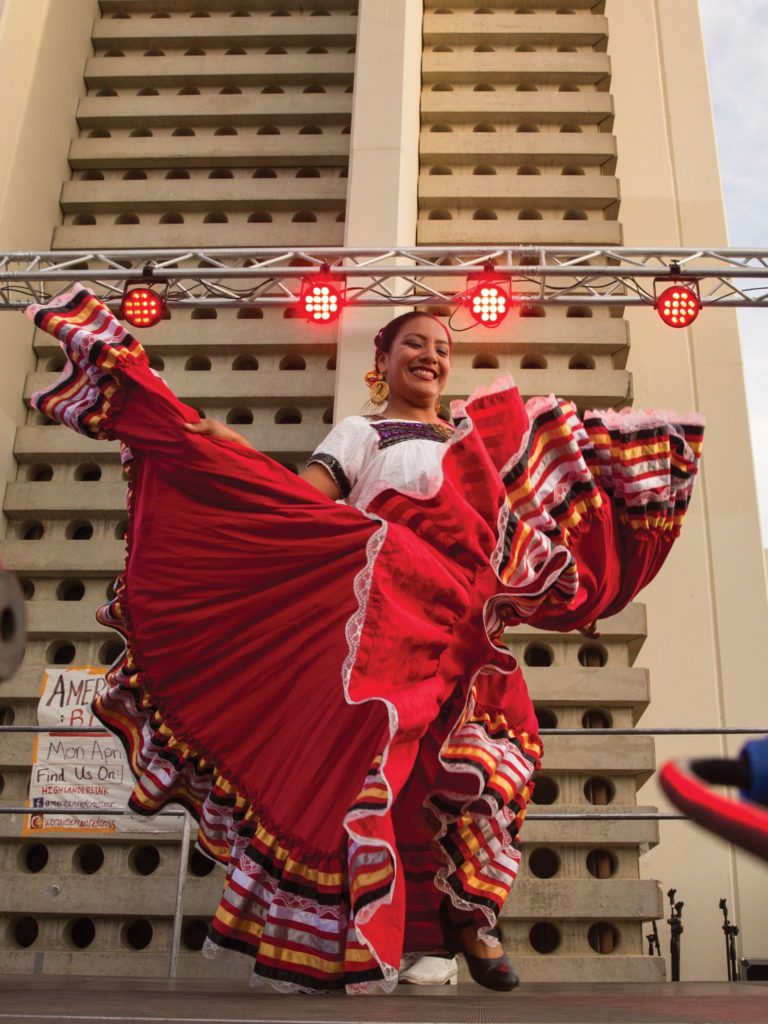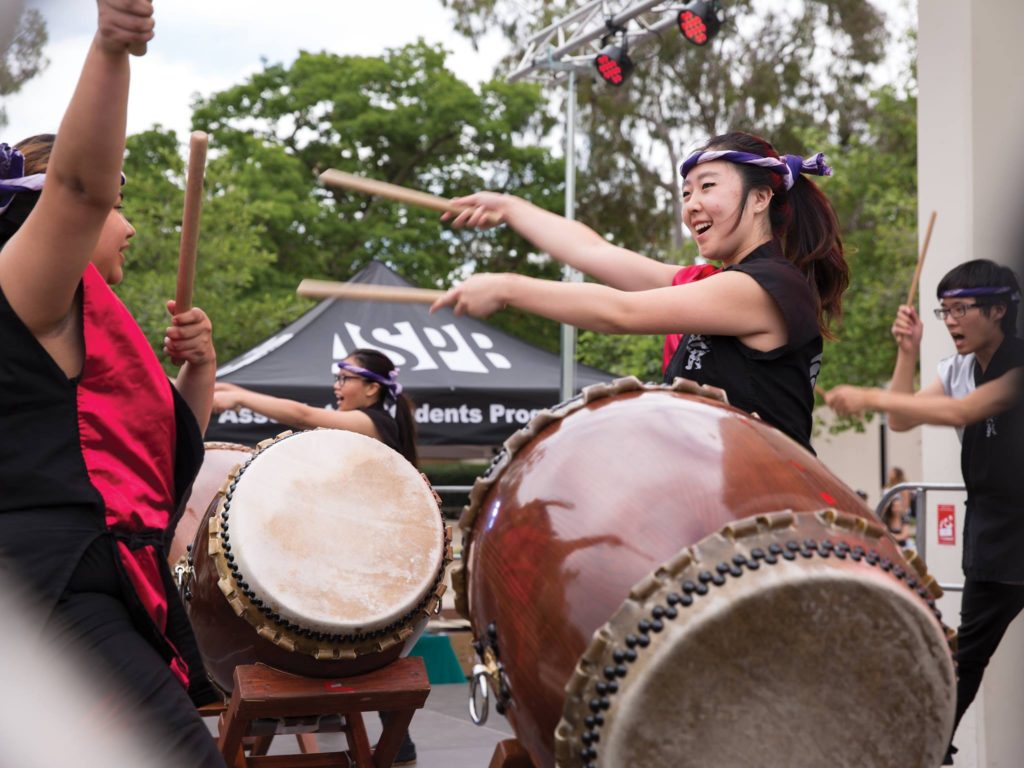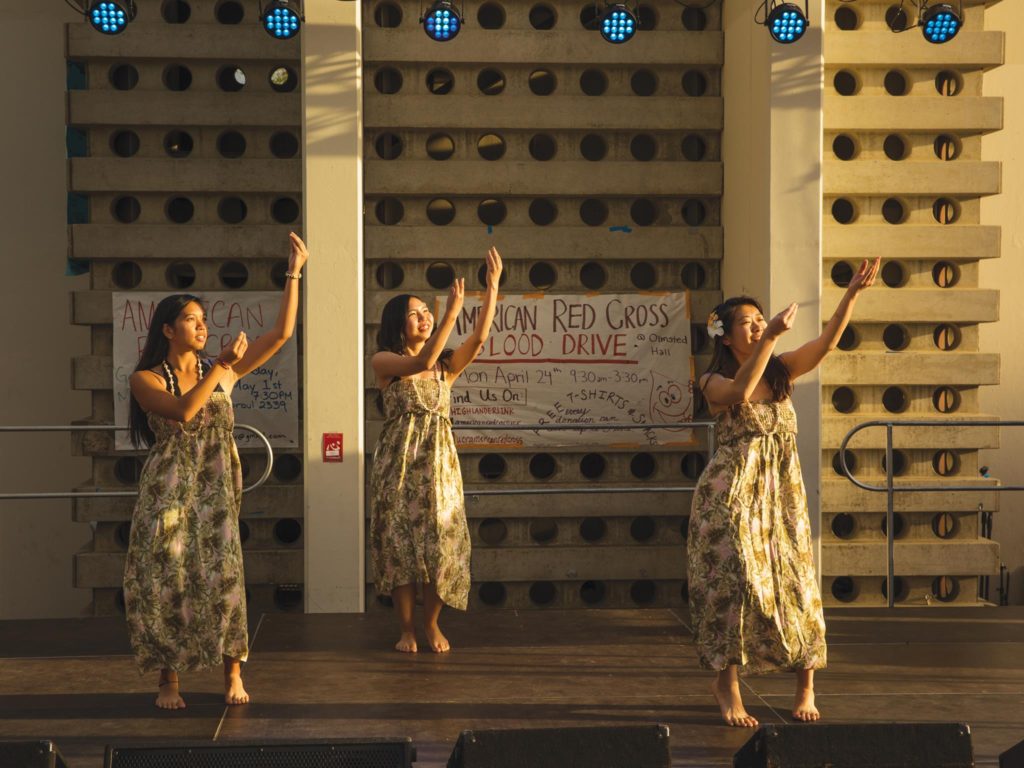
Thomas Holguin/HIGHLANDER
It’s a guiding value within UCR’s foundation and everyday campus life to promote diversity: We see it all around us in the peers we surround ourselves with, in the background of many of our establishments and in our unmatched interactiveness regarding topics that would otherwise go censored or unmentioned on other campuses.
However, it’s not everyday that we get to see these vibrant cultures present something together, let alone a visual display of history, tradition and family. In fact, it’s not even more than once a year that a large-scale cultural show is offered at UCR.
That was once the situation with ASPB’s previous culture show, “R’Movement,” which was a campus-wide cultural dance show, but this year, ASPB’s directors of contemporary culture — fourth-year business major Sonia Ramos and fourth-year media and cultural studies major Melanie Casupanan — wanted to expand the show to be more accessible and accommodating to students.
“We wanted to repurpose and revamp the show. In the past, ‘R’Movement’ was difficult to market because it was so far away in the University Theatre and the student population is growing differently. We want the show to expand as the campus grows,” expressed Casupanan.
And what better place to decide as a location than the Bell Tower, the prime meeting spot for UCR students that stands at the center of campus and can be seen from miles away?
In addition to being more conveniently placed for students to access, ASPB aimed to construct “Gone Global” to be more inclusive altogether.
“‘R’Movement’ was a dance show but “Gone Global” showcases all kinds of different performances,” clarified Casupanan.
And in some ways, the coordination of the event itself also followed the direction of being more comprehensive. “We collaborated with Student Life, who got the food trucks, and International Affairs, who found student orgs for the performances, while ASPB brought out the vendors,” revealed Ramos.
“Gone Global” offered several student orgs, such as HallyUCR who sold kimbap and Detour Design who sold aloo paratha, the opportunity to fundraise with food during the event. However, they “drove the extra mile” by inviting three food trucks over to provide a taste of three largely differing types of cuisine: Cocina Fresca, which served Mexican-styled street food with a specialty of pastrami dishes, Kona Ice, which offered over 10 flavors of shaved ice and Buqqa, a Mediterranean-styled food truck.
When the event began at 5 p.m., massive lines for vendors stretched all the way from the tiled center of the Bell Tower — all of which students could check out during the 10-minute intermission periods between performances — past the staircase. These vendors included a gifted balloon artist, henna tattoo station, button-making station and photo booth.
What truly lit the Bell Tower with a special vivacity that even weekly nooners do not match were the numerous, widely ranging cultural performances, which enticed students walking to and from class to sit at the tables set up in the lawn area next to the Bell Tower and gaze.
Kick-starting the night was Senryu Taiko, whose performance was no exception to their well-known ability to always grasp the audience’s attention with exceptional precision and animated power. Performance director Saburo Nakano explained to the crowd that they were playing the club’s own original piece titled, “Mukashi Mukashi,” which, in Japanese, is the equivalent to “Once upon a time” in fairy tale stories. The piece involved an ue, which is a Japanese flute that accompanies many taiko scores, and synchronized rotations between members on the same set of drums, and overall was an upbeat demonstration of the unique balance that can exist between an airy wind instrument and a deep-toned percussion.

Thomas Holguin/HIGHLANDER
Once Senryu Taiko had the audience locked in, the Filipino Martial Arts Club stepped in to further put everyone’s attention in a headrest. But according to Francis T.B. Serrano, an advisor for UCR’s Filipino Martial Arts Club, “The way that Filipino martial arts is different from Chinese martial arts is that in it, you begin with the weapon and end without one.” Following this guideline, several of the Filipino Martial Arts club members demonstrated what to do in a series of scenarios in which the defender has both weapons and no weapons as well as involving if they are in short or far-range from the attacker. In each, the decisive blow to the attacker was manual, as Serrano explained, “In Filipino martial arts, we consider tools not as weapons but just extensions. The weapons do not define how I fight; I define how I fight.”
On a “high note,” Michael Chen and Brandon Servino from the Not So Sharp, a capella group, individually performed acoustic covers with only guitar accompaniments to establish an intimate setting for the close-to-sunset sky, then the Lambda Theta Alpha sorority once more stirred up the exhilaration of the night with a prompting presentation of their strolling and saluting routine. This began as a series of calls and claps, followed by the five girls linking up together in a tight embrace then once again stepping apart to rehearse their salute. “We’re the only sorority in the world to salute and lock up,” revealed Daissy Arteaga, third-year political science major and the chapter’s orientation advisor. “It is poetry in motion and aligns with our three guiding principles of unity, love and respect.”
The “Gone Global” festivities of the night then took a break from music and verbal-based performances in exchange for the dauntless strutting-down-the-catwalk with Detour Design presenting a collection of outfits — skirts, jean jackets, classic jeans — centering around the theme of denim. Beyond the dazzling ensemble of attire that was displayed, president Flor Garcia clarified the purpose of the club, stating, “Our main goal is to celebrate fashion, not only in its design, but also in its ability to help spread awareness for causes and to raise funds for nonprofits and charities.”

Thomas Holguin/HIGHLANDER
In what appeared to be flawless timing on behalf of both nature and performance, Oceania Dance retrieved the music of the evening just as the slightly gloomy, dim, near-sunset sky suddenly lifted its mood and the hidden, bright sun’s rays peek through the clouds and onto the faces of the three, softly swaying dancers. The first dance was elegant and slow in the style of Hawaiian hula ‘auana to “Ka Ua Kilihune” by the Hawaiian triple-member band Hu’ewa, followed by an enthralling Tahitian belly dance to “Ote’a Tiruvi” by Nonosina, which was an energetic Tahitian drum arrangement.
Ballet Folklorico extended Oceania Dance’s invigorating dance performance but in a much different fashion, with the performers being five pairs of both male and female dancers in traditional Mexican Folk dance garb: The males were dressed in formal, tucked-in white button-downs and black sombreros while the females were decorated in bright, flowing dresses of red, pink and purple. The performance was an extravagant, spotlessly organized arrangement of both partner and single-sex dances, with the final routine consisting of three pairs on stage and a male and two females in front of it. Its choreography largely centered around the exchanging of the sombrero within each pair and ended perfectly with the female catching it in her right hand and looping her left arm around that of her partner.
Contrasting with Ballet Folklorico’s group-heavy performance but not at all compromising the attention of the audience, Monique Aguilera, the vice president of performance of Rhythm and Brains, took the stage to first provide a deeper understanding of the Rhythm and Brains club, describing it as a “music and service organization that serves the community with a passion for music.” Then, she performed “Chocolate” by Spanish pop brother-sister duo Jesse & Joy, which was a song that couldn’t be described by a more accurate word than “adorable.” Immediately following was Veronica Layos, who performed a Tagalog song titled, “Luha” by Filipino rock band Aegis, which she dedicated to her mother who was in the crowd supporting her.
There was a little bit of everything, and what they presented on stage was a reflection of what they represent at UCR.
Although each and every performance up to the point of the finale had both stunned and awed the audience with appealing outfits and fascinating numbers, the show had yet to reach a thunderous, fan-crazed roar from the audience as it did with the final performance from HallyUCR, who shook up the entire crowd with a spotless dance rendition of “TT” by the South Korean girl group Twice. Not only did they have specified steps for each individual member as most K-pop choreographies do but they also followed a theme of black attire with red bandanas tied in different places on each member (for example, some on the wrists, others on the ankles). The energy throughout the entire performance was unforgiving and fascinatingly ended with each member in a different position (for example, standing and leaning to the right or on one’s knees), striking a signature aegyo (or “cute” facial expressions and gestures in Korean pop culture) pose.
With HallyUCR’s riveting ending came the closing of the performance aspect of the event at 7 p.m. However, the vendors were kept open for another hour for students to continue enjoying the night with friends. Therefore, the event delivered as a relieving mid-week festivity that was extensive enough to have been on a Friday but timed perfectly to still be accommodating to students’ study and sleep schedules.
But above all else, “Gone Global” was a unforgettable amalgamation of highly unique and deeply passionate communities — both in the performance aspect and in the numerous organizations that united to coordinate the event — linking arms to provide something bold and remarkable, right at the center of campus life. As second-year chemistry major Jennifer Mann articulated, “Most of the performance shows I have gone to focused on the singing and pop aspects of American culture, but tonight, both traditional and pop culture from many different countries were showcased. There was a little bit of everything, and what they presented on stage was a reflection of what they represent at UCR.”








